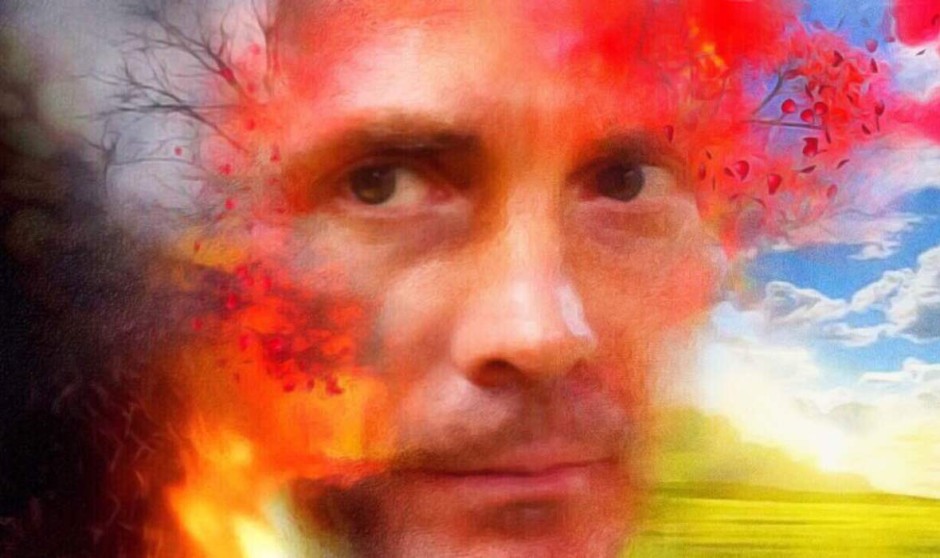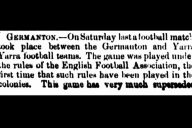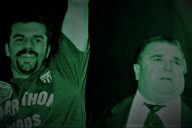Prologue
With a population of just 1.7m – nearly a million fewer residents than the next (4th) most populous Australian state, Western Australia (2.6m), it probably isn’t too surprising that South Australia struggles to make an impact economically.
South Australia is growing at a far slower rate than its bigger siblings, and it suffers significant losses to interstate migration annually – from July 2005 to June 2015, South Australia had a net loss of approximately 35,231 people to the other states.
Major blows to the local economy, such as the closure of Holden’s manufacturing facilities, have cast a dark shadow over SA’s future; even schools are affected in a profound way.
South Australia is desperate for heroes to give the wider community hope that they can triumph against the odds. Perhaps that’s why the state has a proud sporting history.
Though an Australian Rules stronghold, SA has produced successful teams in cricket, basketball, netball and football, among others.
However, there is a problem. While teams from SA are typically competitive, punching above their weight and embarrassing their more fancied rivals, they aren’t particularly good at winning when it matters most.
Adelaide, South Australia: Pissant town, City of Chokers.
Since 2004, South Australians have had little to crow about. SA’s sportswomen have enjoyed some recent success, with the Adelaide Thunderbirds winning the ANZ netball championship in 2010 and 2013, the SA Scorpions winning the domestic one day cricket competition this season, and the Adelaide Lightning taking out the WNBL Grand Final in 2007-08.
Meanwhile, the Redbacks won the men’s one day cricket competition in 2011-12, and the Twenty20 competition in 2010-11. These are the only titles the state’s teams have won in the last 12 years – teams not named ‘Adelaide United,’ that is.
SA’s two AFL teams, the Adelaide Crows and Port Adelaide, are certainly no strangers to choking. From 2002 to 2005, they combined for four minor premierships – but only the 2004 Port Adelaide side could convert topping the table into a Premiership trophy. In the other three years they didn’t even reach the decider.
Port Adelaide again made the AFL Grand Final in 2007, where they were smashed by a record 119 points by Geelong. The club subsequently fell into significant debt and failed to reach the finals again until 2013.
The Crows are still waiting for success some 18 years and many failed finals campaigns after their back-to-back premierships in 1997 and 1998.
This season SA’s male cricket teams produced a ‘choker’s treble,’ with the Redbacks losing the final of the Sheffield Shield and the one day competition, while the Adelaide Strikers lost the Big Bash Twenty20 final; in both the Sheffield Shield and the Big Bash the South Aussies had finished minor premiers. Fortunately the female Scorpions were able to save the blushes of their male counterparts by winning the one day competition – their first title after being runners-up on three previous occasions.
The 36ers lost the 2014 NBL Finals series 2-1 to Perth Wildcats – Game 3 ended in a 34-point belting. Sixers fans could only watch in horror as their chance to claim a first title since 2002 slipped away.
The Adelaide Bite, formed in 2009, have already finished runners-up on three occasions in the Australian Baseball League.
Then there’s Adelaide United.
“The Pissants’ Team”
It’s not hard to argue that Adelaide United have earned the choker’s tag commonly held by South Australian sporting teams. A quick overview of the results certainly tells us this:
2003/04 – Won Elimination Final on away goals after leading Brisbane Strikers 3-0, lost Preliminary Final 5-0 to Perth Glory
2005/06 – Won Premier’s Plate, but then failed to qualify for the Grand Final after losses to Sydney and Central Coast
2006/07 – Lost Semi Final (and Grand Final hosting rights) 2-1 to a 92nd minute James Robinson goal, lost Grand Final 6-0 to Melbourne Victory
2008/09 – Lost ACL Final 5-0 to Gamba Osaka, lost Premier’s Plate on goals scored, lost Semi Final 6-0 to Melbourne Victory, lost Grand Final 1-0 to Melbourne Victory
2010/11 – Lost Minor Semi Final 3-2 to Gold Coast United after leading 2-1 at home with 20 minutes to play
2012/13 – Lost ACL Quarter Final 5-4 to FC Bunyodkor in extra time, lost home Elimination Final 2-1 to Brisbane Roar
2014/15 – Lost Semi Final 4-1 to Sydney FC
Adelaide United has overachieved given its limited resources, particularly in the Asian Champions League. However, aside from the 2014 FFA Cup and two preseason cups, it hasn’t converted eye-pleasing football or competitive spirit into trophies.
United have crumbled on the big occasions with unerring regularity. Prior to 2015/16, Adelaide’s domestic league finals record was atrocious. From 21 finals matches, Adelaide lost 13, won five and drew three.
Even Josep Gombau couldn’t get his hands on the Premier’s Plate or the Golden Toilet Seat, despite raising the club out of its second post-Kosmina malaise, teaching it how to win by comprehensively outplaying the opposition and lifting the club’s first piece of silverware in seven years.
Adelaide United seemed well placed to challenge again when Gombau abruptly announced his departure prior to the 2015/16 season commencing. It was no cause for concern – his good friend, Barcelona legend and Adelaide United technical director Guillermo Amor was going to take over and carry on with the mission. Chairman Greg Griffin assured fans it would be a seamless transition.
Except it was anything but seamless.
The Lazarus act
After Round 8, Adelaide United were bottom of the league and winless, though it was clear much earlier that things were not well in the City of Chokers.
Before the A-League season had begun, questions had already been raised about Amor’s coaching – including by the players themselves. By Round 8 the sense that the club was once again headed for collapse had gripped the Pissant Town.
As I wrote for Shoot Farken prior to Round 7, the slide needed to be arrested immediately – the club simply could not afford yet another self-implosion if it were to continue to garner respect among the community.
The club responded with a 0-0 draw at home to the Jets, and a 2-1 defeat away to the Victory. The football was better, the team was competitive (and really should have won against the Jets), but it remained winless and the calls for Amor’s head from some fans continued. Amor himself remained as calm and controlled as he had been all season – a stark contrast to the passionate and bombastic Gombau.
Reds fans could be forgiven for thinking their season was over at this point. According to Andrew Howe, god of Australian football statistics, no team across any of Australia’s football codes had ever come from last position, eight rounds into a season and lifted the title. To do so would be impossible, according to history.
Few would have predicted that the Round 8 loss in Melbourne would be Adelaide’s last outside of Coopers Stadium for the rest of the season – or their last defeat anywhere until Round 23 (excepting the ACL playoff).
Adelaide finally got their first win of the season in Round 9, with an early Pablo Sanchez goal being enough to see off Perth Glory. The Reds followed it up with a 2-1 win over Sydney FC five days later, and then their next home game brought another three points, courtesy of a 3-0 success against Wellington. Things were looking a little brighter.
Even after five games without defeat, there were still questions as to how far Adelaide’s revival would go. They had yet to win away and faced a trip to Brisbane, who had emerged as surprise contenders. At that time they had dropped only two points at home.
Adelaide smashed the Roar 4-1, with Bruce Djite – who had not scored for 11 months and was frequently (and quite unfairly) criticised as a weak link – scoring a brace. The Reds repeated the win and margin against the Roar with a 3-0 belting at Coopers Stadium five rounds later, Djite again getting on the scoresheet.
However, it was the game immediately prior that suggested the mood had changed in SA. Bruce Kamau’s 90th minute winner ended a nine game winless run against bitter rivals Melbourne Victory; it was also the first time the Reds had beaten the Victory away since January 2011.
The Reds narrowly failed in their quest to reach the AFC Champions League group stage, defeated 2-1 at home by Shandong Luneng Taishan – though this may have proved to be a blessing in disguise, given the chaos extra matches and travel can play with a domestic title tilt.
The Round 22 win against Wellington had the Reds sitting atop the table and poised to do the unthinkable – but would their nerve hold?
That old choking feeling…
Paul Marcuccitti probably echoed the sentiments of many Reds fans when he wondered whether United would once again underachieve and leave fans shattered.
It seemed that another Adelaide choke was indeed on the cards. Nick Fitzgerald’s 71st minute strike was well-placed and well-earned, as fellow contenders Melbourne City got the better of the Reds and ended their 14 match unbeaten run.
Adelaide then travelled to Wanderland, escaping with a 0-0 draw despite being comprehensively outplayed by Western Sydney. This was the first time Adelaide United had failed to score in successive games since the final two games of the 2013-14 season.
A shaky Reds outfit managed to dispatch the last-placed Mariners 4-2 the following round, with Bruce Djite scoring his 6th goal since Round 16 and equalling Travis Dodd on the all-time A-League scoring charts for Adelaide.
Djite surpassed Dodd with another brace, this time against a Sydney FC side with its attention firmly focused on the ACL. The 2-0 win brought some stability to the Reds’ campaign, and a subsequent 2-0 win in the final round against Melbourne City meant that Adelaide now needed a favour from a side that had brought it so much pain over the history of the A-League – and, like Sydney FC, had a commitment in the ACL to worry about.
For once, the Victory did their rivals a favour, holding Brisbane to a 0-0 draw and sending the Premier’s Plate to Adelaide for the first time since 2006. The unthinkable had happened – Adelaide were A-League Premiers after starting the season with three draws and five losses. A truly remarkable turnaround that should go down in Australian sporting folklore for all time, though it probably won’t given that it happened in the sport for “Shielas, Wogs and Poofters,” and in Adelaide, the pissant capital of Australia.
But the greatest comeback in the history of all Australian football codes was not finished yet. In most football competitions around the world, the team that finishes top of the league after all home and away games are completed are considered the ‘Champions’.
Here in Australia, we do things a little differently, and there are post-season playoffs to determine the Champions. This is a title which has eluded Adelaide United in unimaginably painful ways for 10 seasons.
As I wrote in 2013 for Shoot Farken, the Golden Toilet Seat brings with it a sense of legitimacy (among the wider Australian sporting public). Perhaps because it’s a tradition in this country to consider the playoff winners the Champions and the league winners the minor Premiers; or maybe we appreciate the mental and physical fortitude required to triumph under cutthroat conditions.
Regardless, it’s a sense of legitimacy that Adelaide United would glaringly lack among sports fans and even its own supporters until they lifted the Championship trophy themselves. Until then, they were another also-ran, a disappointment, a team of chokers.
The fairytale finish
As the United players came off at half time in the Semi Final against Melbourne City they were greeted by an ovation from their fans – some of whom had booed them or not even turned up in the early rounds. Despite the score remaining deadlocked at 0-0, United had been the better side.
It was clear that belief had returned to Coopers Stadium after the incredible Premiership win; the players may have fed off this sentiment, with Djite’s stunning long range effort – his 5th goal in four games – handing United the lead in the 48th minute. The Reds doubled their advantage and increased their comfort levels when Djite scored again from the penalty spot on the hour mark.
Of course, this is Adelaide, so fans cannot be comfortable in a crunch game. Nick Fitzgerald again struck fear into the Reds faithful when he somehow crept between Adelaide’s defenders to score in the 72nd minute.
Perhaps in previous years, this would have been the cue for Adelaide to collapse like so many South Australian teams before it. The pressure was on, and a City side led by two of the league’s best ever performers in Aaron Mooy and Bruno Fornaroli were looking to make their first ever Grand Final. City needed this as much as United did, perhaps more given continuing questions over their own legitimacy.
Unfortunately for City, this was the Adelaide side that simply would not die. Like the near-immortal villain of an ’80s slasher film, United rose from the floor and struck two killing blows in the 88th and 90th minute through Dylan McGowan and Pablo Sanchez. As City’s players slumped lifeless to the ground, the Reds celebrated. A spot in the Grand Final had been secured, and for the first time it would be held in Adelaide. The stage was set for either the biggest triumph in the club’s history, or its greatest and most shattering choke.
Adelaide’s opponents, the Western Sydney Wanderers, were no strangers to choking. Their incredible ACL success aside, the Wanderers had matched Adelaide’s two A-League Grand Final defeats. The winner would take home the toilet seat for the first time while the loser became a three-time choker.
It was tough to pick a favourite: the three previous contests had ended in draws, though the Wanderers had been the better team in each one. Adelaide had a longer break between games while Western Sydney were forced to come from 3-0 down to beat the Roar 5-4 in extra time. Perhaps this would give them the inspiration that they could overcome any adversity; and Adelaide were… well, they were Adelaide – a team with a proud history of choking from a state full of chokers.
Early in the contest, in front of a packed and rocking Adelaide Oval, the Wanderers had the better chances. Romeo Castelen, who had been in scintilating form heading into the decider, found some space but blazed his shot well over. The Reds struggled to play out of their half as the Wanderers attempted to squeeze them in. To choke them, if you will.
Then, a simple moment of control by Marcelo Carrusca and a rash mistake by Scott Neville saw Carrusca break free on the left, playing a ball in for Bruce Kamau to zip in from the right, straight past ex-Reds defender Scott Jamieson, to poke home Adelaide’s first ever Grand Final goal. Could they actually do it?
Twelve minutes later, after another missed opportunity for the Wanderers, Kamau was fouled as he approached the box. Up steps Isaias, who prior to this season had scored two goals in his professional career. His inch-perfect effort somehow finds the top corner of Andrew Redmayne’s goal for his fourth of the season, and the Reds are out to a 2-0 lead.
Two-nil, we are told ad infinitum, is the most vulnerable scoreline in football. But could the Wanderers do it again? They would need to find something in the second half to crush Adelaide’s dream while realising their own, and in the 58th minute Scott Neville made up for his earlier mistake and found the same corner as Isaias had in the first half. Here come the Wanderers; here comes that choking feeling.
A nerve-wracking final 30 minutes ensued. Years were shaved off the lives of fans as they watched in hope and horror in equal measures. How could they last through extra time or – gasp – penalties…? But the game would be decided in normal time. In the 90th minute, with time running out for the Wanderers, Pablo Sanchez pounced on a mistake by substitute Kearyn Baccus and rolled the ball into the far corner as Adelaide Oval erupted in pandemonium. The Reds had done it, at long last.
From a history of choking, from the departure of their beloved coach, from no win in eight games and calls for Amor’s sacking to 14 games unbeaten, to Premiers, then Champions. Tears were shed by players and fans alike as the realisation set in that Adelaide had finally conquered the A-League and in the most incredible way. A true sporting miracle, and a gift of hope to a state in sore need of some inspiration.
The saga continues
The Barcelona revolution set in motion by the club following the near-mutiny of players and fans alike has produced the titles. Adelaide United sits as the best team in Australia, and the challenge now is to turn the fairytale into a dynasty.
Only Ange Postecoglou’s Brisbane Roar side have retained the Toilet Seat over the 11 years of the A-League, and all of the remaining foundation clubs, save for Perth Glory, have held it. No team has retained their Premiership so far.
There is still one more wrong for the Reds to put right – their storied but ultimately unsuccessful run to the ACL Final. Adelaide will also eye regaining their FFA Cup from Melbourne Victory to follow in their rivals’ footsteps and hold the domestic treble.
The challenge for Amor and his men – those who return for the title defence – is not only to keep the club as a contender but to uphold the sense of legitimacy that now belongs to the club. And, to maintain the feeling that this club is a family; a key ingredient to the Reds’ early success, thrown away under Coolen before the dying embers were salvaged by Gombau and now fully restored by Amor.
Those in the club’s boardroom cannot afford to let success become complacency. As Amor himself told the supporters gathered to greet the Reds the day after the Grand Final, it is now another day and a new challenge awaits. Stand still, and Adelaide will once again slide down the ladder and potentially back into self-implosion.
The powers that be would also do well to grasp that women are an important part of the club. News that the FFSA Lady Reds – currently run by the football federation rather than Adelaide United – could be brought back into the fold is heartening, especially given the potential for growth as shown by the Matildas’ recent success. Equally, cringeworthy and archaic marketing gimmicks such as the ‘Reds Girls‘ need to disappear for good.
The club may have finally won ‘the big one’, but significant challenges lay ahead – to keep winning titles, to produce talented young South Australian players (both male and female), to build the club’s supporter base and reach, to become more inclusive and to solidify its financial base with links to both domestic and international partners.
For now, Adelaide United fans can enjoy the amazing story that the club has provided them with this season, along with the two trophies. The pissant tag will probably never go away entirely, but we can safely say that it is no longer a “…club [that] will never win anything…”
Thanks to United, Adelaide is not now a pissant town, or a city of chokers; it is instead a Premiership town, and the city of Champions.
Shoot Farken wishes to thank Jeff Vatuvei @AardigOranje for the digital illustration of Guillermo Amor.
















